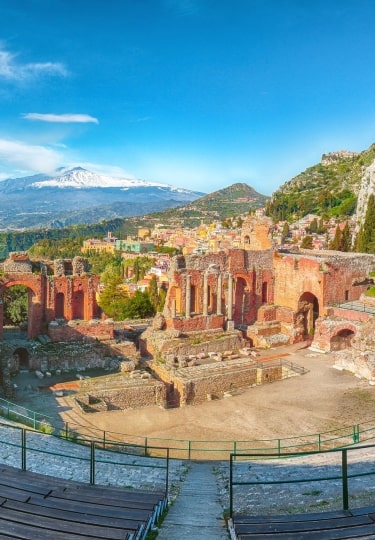The abundant charms and extraordinary history of this Italian island make whittling down a list of the best places to visit in Sicily a seriously tricky business.
The island’s strategic importance at the heart of the Mediterranean has brought about a rich, multi-layered history and a distinctive Sicilian identity. Like the warm blue waves that lap at its picturesque coast, a succession of invaders arrived to leave their mark: the Greeks were followed by the Romans who were succeeded by the Normans, the Byzantines, and the Spanish before Sicily’s eventual fusion with modern-day Italy.
The visual signposts of this past—with periods as tumultuous as simmering Mount Etna—can be found all over Sicily, overlapping, layered up, and harmoniously fused. As such, despite being just over twice the size of Hawaii, Sicily crams it in—and invites you to do the same.
Baroque cities, stretches of serene golden sand, knock-out cuisine—it’s Italy, but it’s also distinctly Sicily. Here are some of the best places to visit in Sicily on your next vacation.
Castelmola
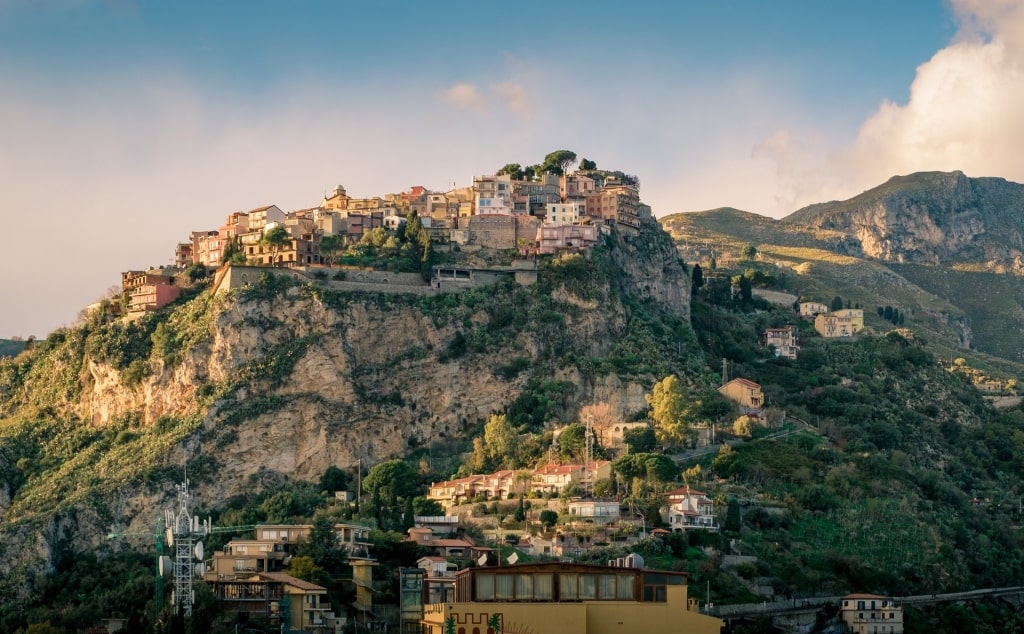
Castelmola
Set a little over a mile back from the glamorous coastal resort of Taormina is Castelmola, loftily positioned 1,800 feet above sea level on the higher elevations of Mount Tauro. Established on a natural shelf with commanding views across the strait of Messina to Calabria, a trip to this reinforced hamlet is well worth a few wiggly mountain roads.
Dating back to the 9th century, Castelmola used to be a near-impregnable fortress. Today, it’s a peaceful jumble of peach and orange buildings with stairways of white pumice and colorful cafe terraces ringed with panoramas of sea, coast, and cloud-fringed Mount Etna.
Whether you choose to relax at a table sipping local specialty Vino alla Mandorla (a sweet almond wine) or wander the nest of narrow medieval streets, you’ll definitely look back at Castelmola as one of the best places to visit in Sicily.
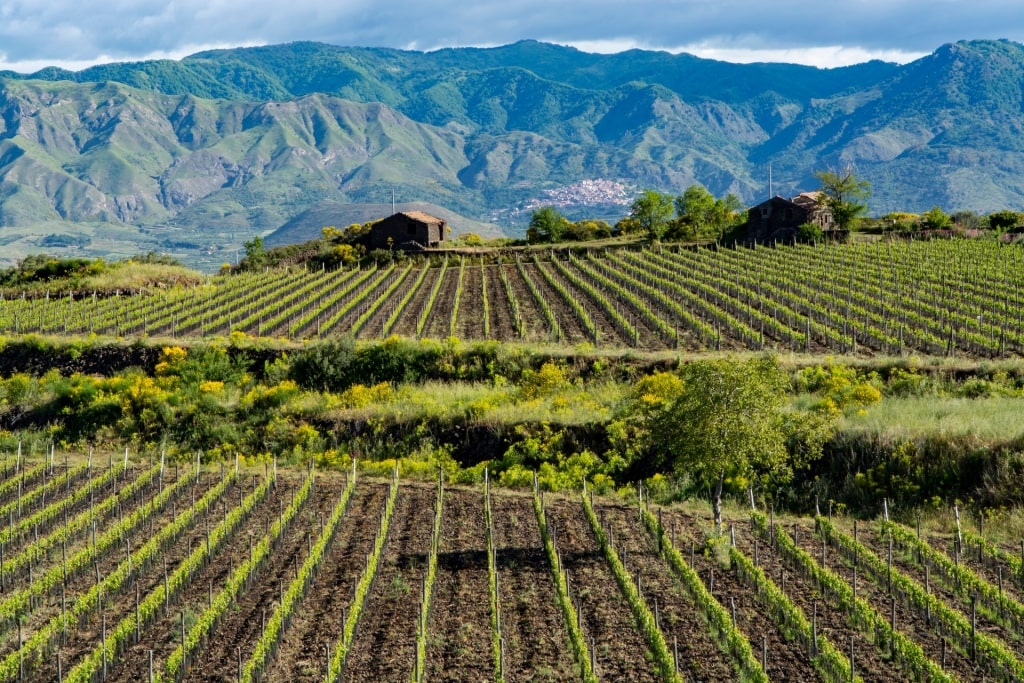
Castelmola
Drawn to the slumbering volcano’s irresistible charisma? Castelmola acts as a good departure point from which to embark on a wine-tasting trip along Etna’s generous slopes. The humid climate and fertile soil of the volcano make for superb grape growing, while the knowledgeable locals have been vinifying their distinctive varieties since 800 B.C.
Popular grape varieties grown on the volcano include the light-bodied, typically cherry-forward Nerello Mascalese and the more robust, spicy Nero d’Avolo.
Tindari
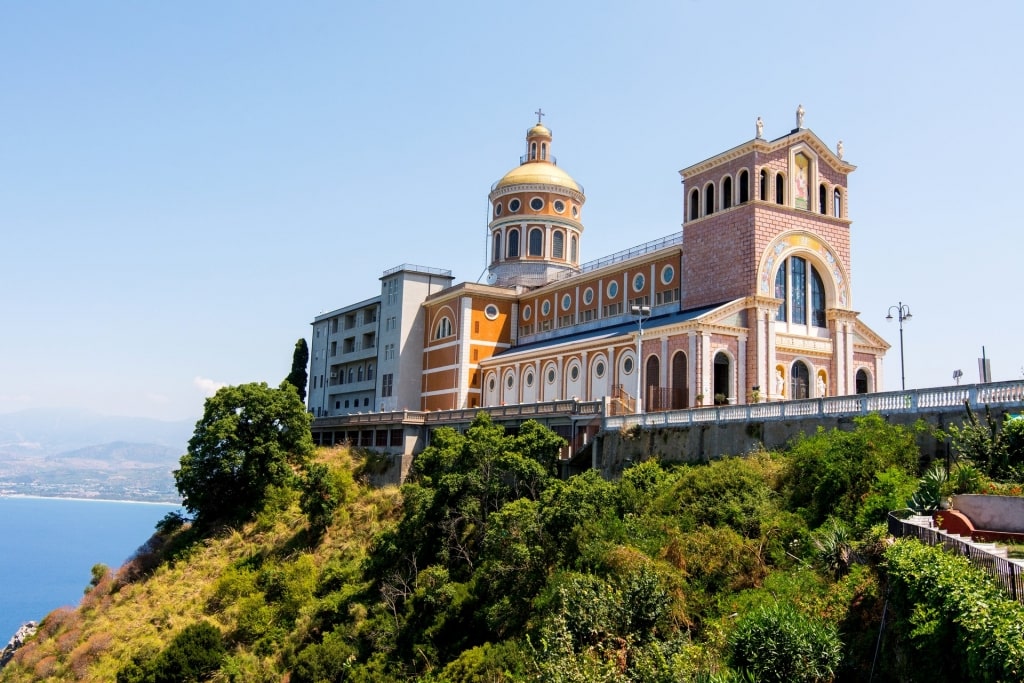
Sanctuary of the Black Madonna, Tindari
On the island’s northeastern coast, Tindari’s cliff-edge location offers extraordinary views of the volcanic Aeolian archipelago skipping across the turquoise Tyrrhenian Sea towards the mainland. While low tide beneath the town exposes a tranquil lagoon with a spit of golden sand that projects enticingly into the warm water, Tindari is equally well known for its ostentatious pink and gold cathedral.
This architectural confection, known as “Shrine of Our Lady of Tindari,” was completed in 1979 to house Tindari’s famous Black Madonna.
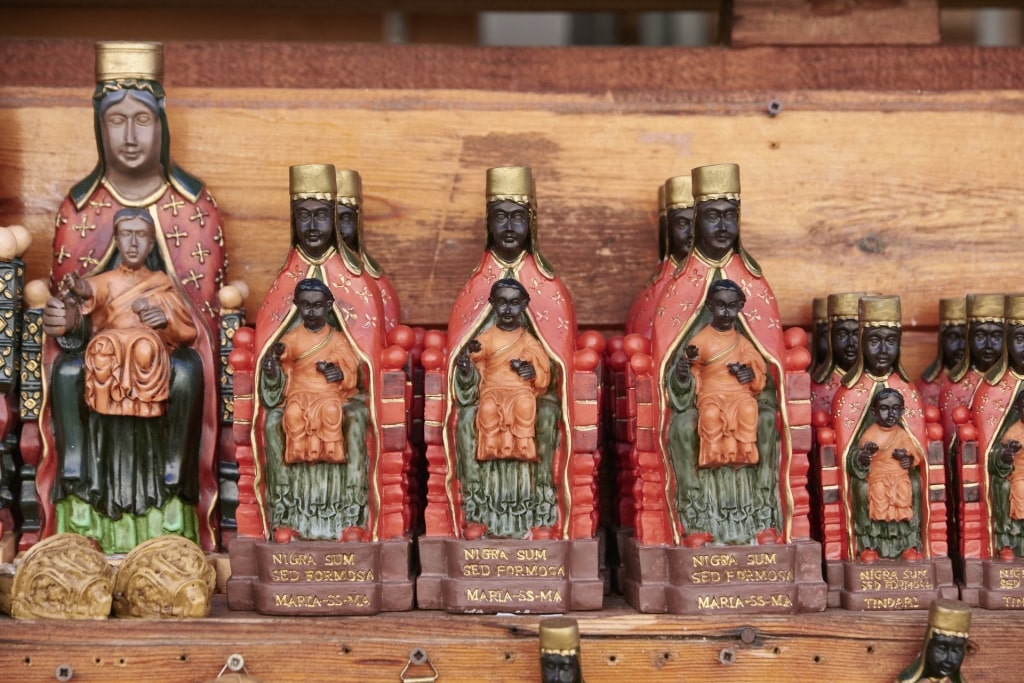
Black Madonna, Tindari
This rare icon, carved from cedar wood, depicts the Virgin Mary and the Christ as dark-skinned. Its unusual appearance and the serendipitous manner in which it arrived on Tindari’s beach have imbued the statue with a heightened spiritual significance.
Pilgrims come from all over the island—and even the occasional Pope from Rome—to see the Black Madonna. If you’re fortunate with your timings, you can confirm if the spit of sand below the sanctuary really does, according to Tindari lore, resemble the profile of the Black Madonna.
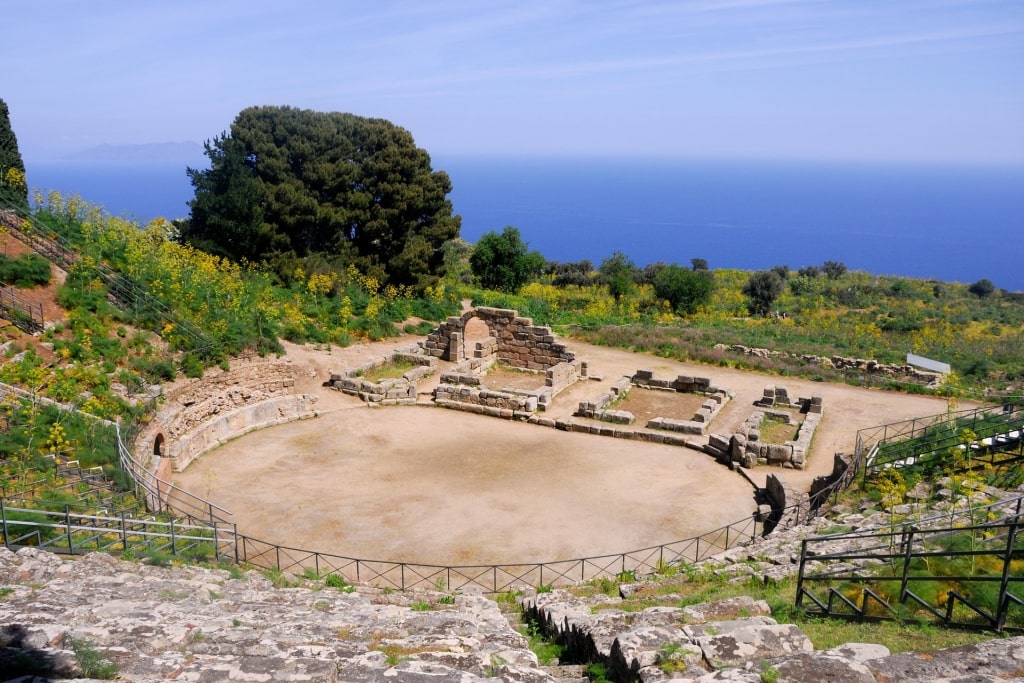
Greek Theatre, Tindari
Or make your way to the Greek Theatre, the town’s other major cultural site. Exploiting its seaside location to maximum effect, this 4th-century archaeological treasure is in excellent condition and is still used for performances to this day (happily minus the gladiatorial hacking).
Savoca
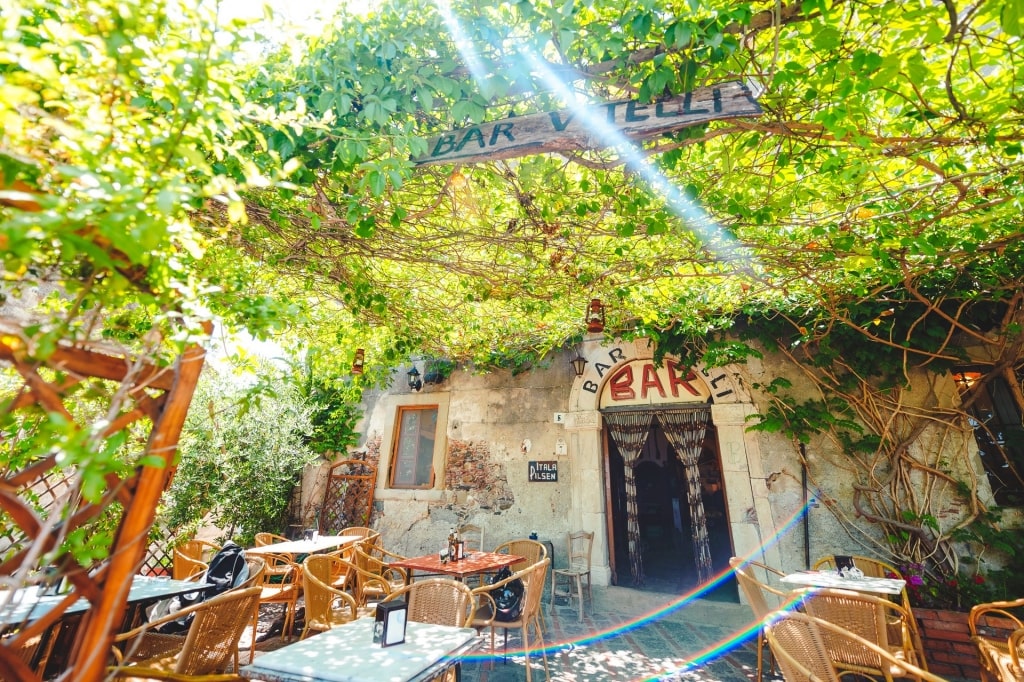
Bar Vitelli, Savoca
The village of Savoca, spread over two small peaks between Taormina and Messina on the east coast, is a uniquely special place.
When travelers arrive in Savoca, they’re typically drawn there not for its spellbinding views across the Strait of Messina or for its outsized cultural heritage, nor for the local lemon granita topped with crisp zzuccarata biscuit. Instead, the majority of visitors find their way to Savoca because of its links to The Godfather.
It’s been nearly a half-century since The Godfather, Dario Fo’s classic novel about a Sicilian mafia family, was translated to the silver screen. Despite this, the power of the epic Godfather trilogy has lost none of its potency. You’ll discover this on a visit to Savoca, especially if you’re a part of the engrossing Godfather Tour.
Whether you’re a devotee of Fo’s novels or a neophyte, the Godfather Tour touches upon the island’s underworld history at a safe remove while also touring some stunning, out-of-the-way places in Sicily. Sharp-eyed fans will recognize backdrops used in the movies, while a visit to the Savoca-based Godfather museum of Bar Vitelli will offer deeper insight into the production process.
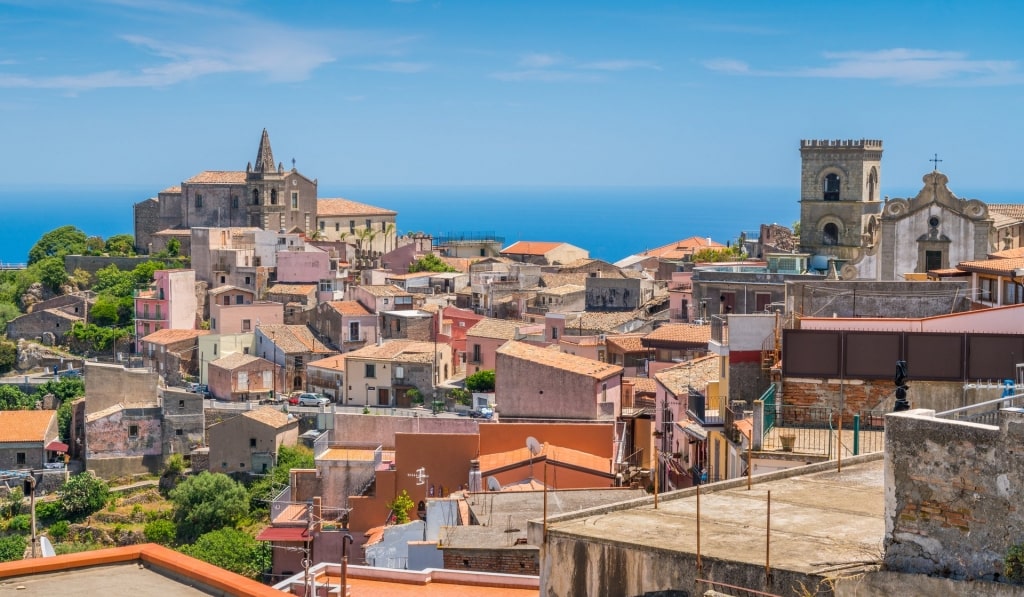
Forza D’Agro
After Savoca, the tour progresses south to Forza D’Agro, a coastal village threaded with ancient alleyways that often conclude in incredible sea views. Also here is the striking castle of Capo Sant’Alessio, where Al Pacino and Sophia Coppola shot scenes for the third installment.
If you have time, a deliciously offbeat addition to the town is a museum where Sicilian landmarks are crafted out of chocolate. While on the subject of food, don’t worry—sustenance on the Godfather Tour won’t only come in the form of Marlon Brando impersonations and picture-perfect Sicilian scenes. Tastings of local specialties will be arranged for you along the way. Capeesh?
Taormina
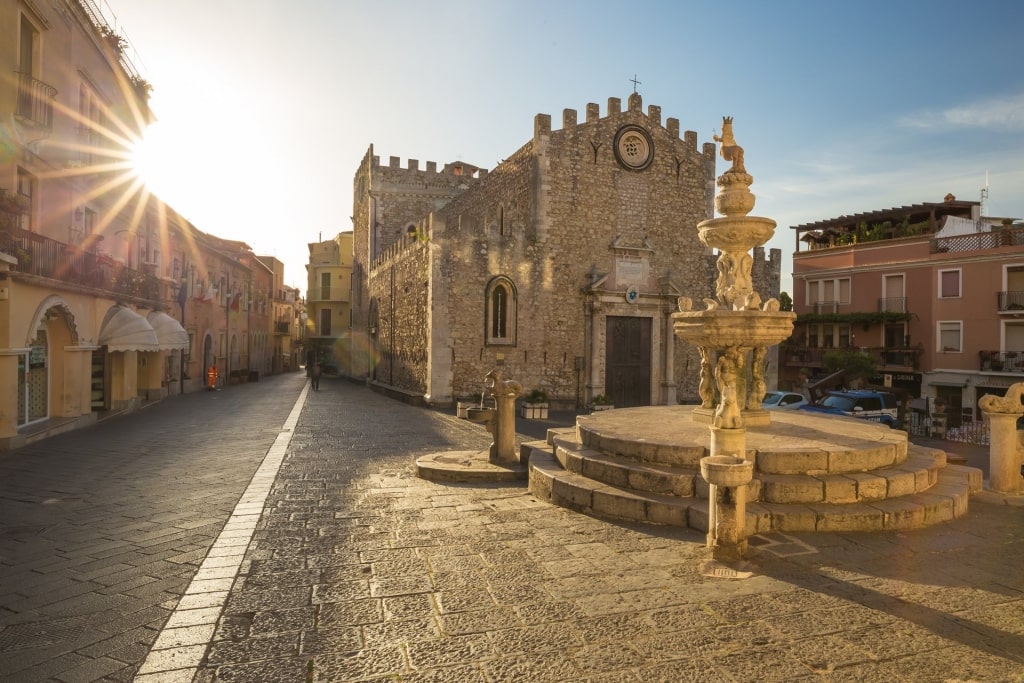
Corso Umberto, Taormina
Established as one of the best places to visit in Sicily since the 18th century, Taormina offers panoramic views over the Bay of Naxos and the Ionian Sea. This charming resort town is set into the Sicilian hills 200 feet above sea level, its timeworn streets and marble stairways lined with orange trees and family-run boutiques.
As one of the most beautiful towns in Sicily, Taormina was an essential stop on the 19th-century’s Grand Tour, and for many literary types it became a home away from home. D. H. Lawrence resided amid Taormina’s cannoli and stone pines for several years, completing much of Lady Chatterley’s Lover along the way.
Finishing up his day’s writing as the sun sets, Lawrence might have joined the populace in a passeggiata along the main strip of Corso Umberto, pausing to pick up a refreshing lemon granita before continuing on to the main piazza.
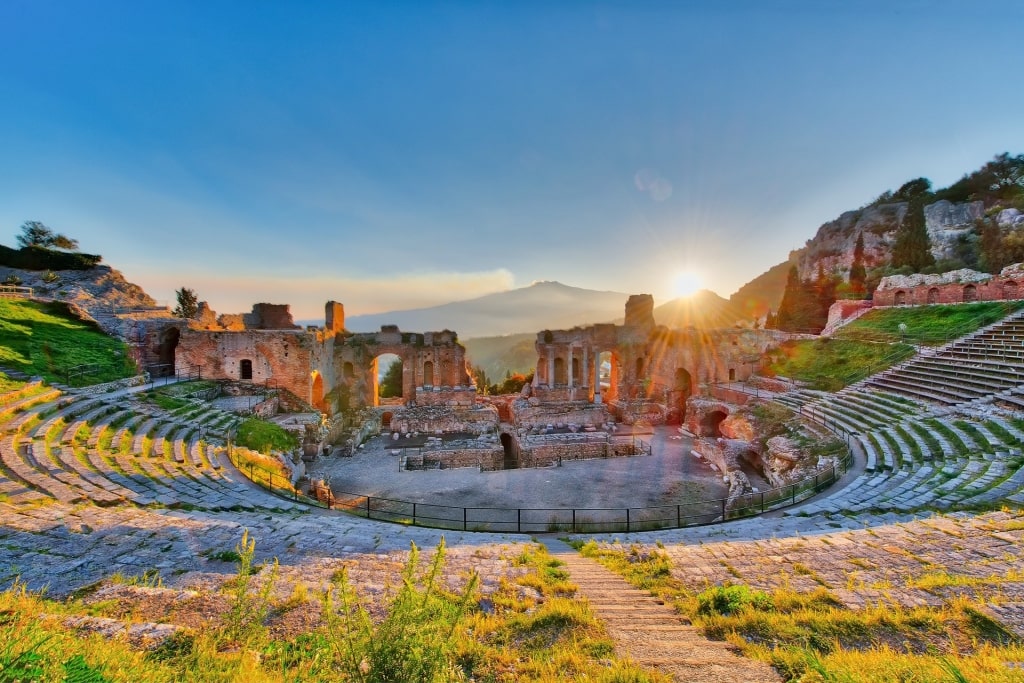
Greek Theatre of Taormina
While Taormina the town is a destination in itself, it comes with the added bonus of the Greek Theatre. A site of both Greek and Roman significance, the theater’s position on the peak above the town’s terracotta roofs is striking. Sicily’s second-largest theater is still used for lofty concerts from spring to early autumn.
The Blue Grotto
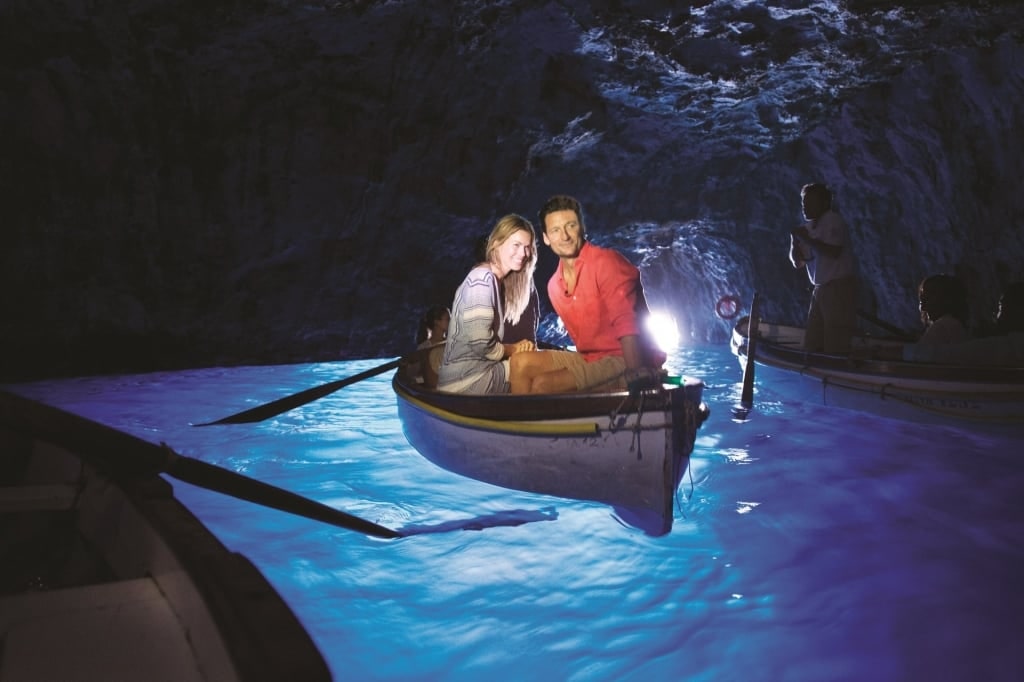
Blue Grotto
If you’re visiting Taormina, you’ll find, while sipping white wine amid the bougainvillea-scented breezes, that you’ll spend much of your time staring out over the far-reaching coastal views. You’ll inevitably feel a pull to the sapphire expanse of Taormina Bay, home to some of the best beaches in Sicily. If you choose to charter a boat, be sure to make time for the mesmerizing Blue Grotto (or “Grotta Azzurra of Taormina”).
The coastline on this stretch of Sicily is an undulation of rough, characterful limestone cliffs arcing over echoing sea caves. One of these is the Grotto—a sizable specimen which, due to its form and orientation, seems to shine with an inner luminosity.
Travelers to Capri may have already witnessed a similar phenomenon and may decide to forgo a visit to the Sicilian version. Be aware, however, that this grotto comes with a shorter boat ride over calmer seas and distinctly fewer tourist rowboats to play bumper cars with while inside. As with Capri, it’s also possible to dive into the grotto.
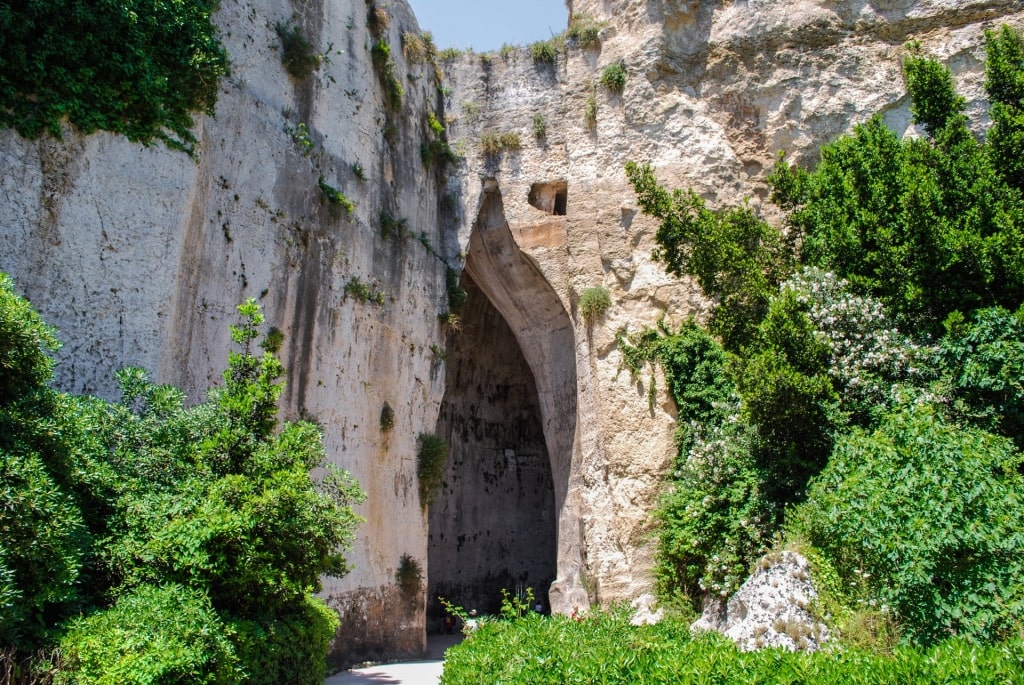
Ear of Dionysus
If time allows, another of Sicily’s significant limestone phenomena worth visiting is the Ear of Dionysus. No sea legs required here: located in Syracuse, the Ear is actually a tall, curving limestone quarry with extraordinary acoustics. Its name stems from the legend that the Greek tyrant Dionysus would use the cave to eavesdrop on whispering conspirators.
Syracuse
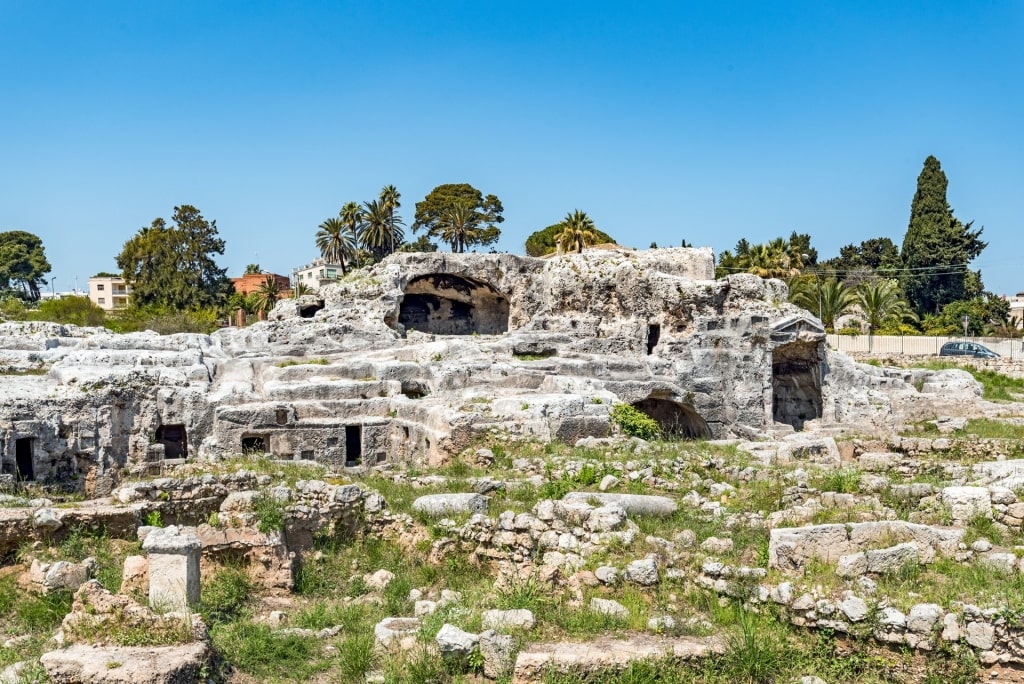
Tomb of Archimedes
Sublime Syracuse is perhaps the best place to visit in Sicily to come to grips with the island’s palimpsest past.
At one point the largest city in antiquity, Syracuse combines Grecian and Roman ruins with Sicilian baroque architecture and much more amid its UNESCO-listed streets. Touring this open-air museum, you’ll encounter its spectacular Greek Theatre (still used for concerts today) as well as the Tomb of Archimedes, the remains of Syracuse’s most famous son.
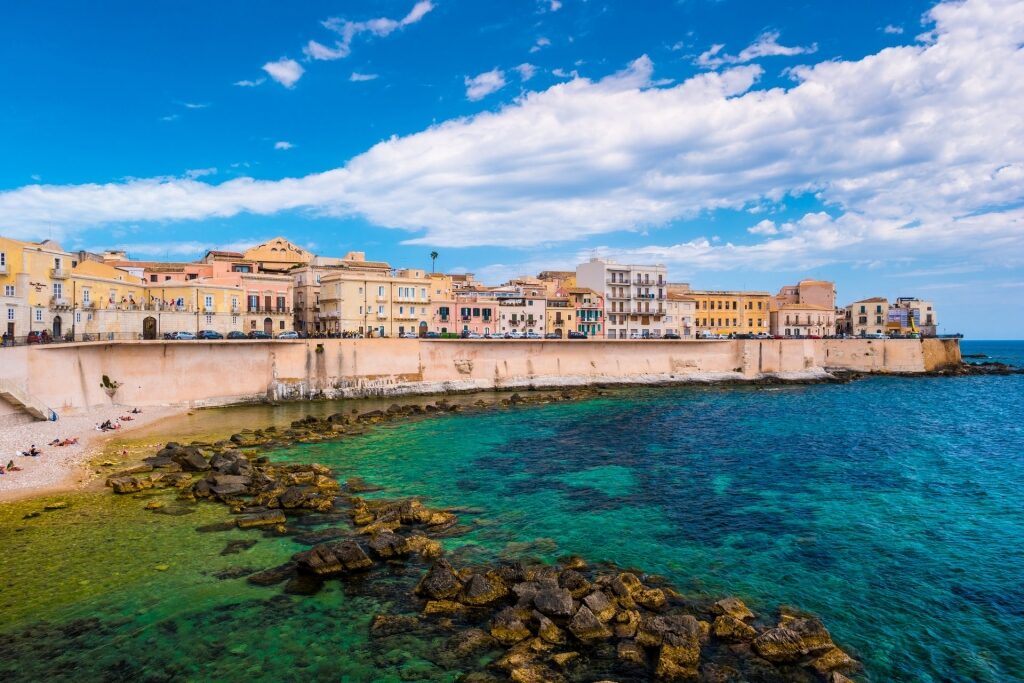
Ortigia
The jewel of Syracuse is the island of Ortigia, the city’s historic heart. A labyrinth of bars, restaurants, and street markets, if you can resist dallying too much along the way, you’ll eventually emerge into the Piazza del Duomo. Here you’ll find the baroque duomo surrounded by sophisticated palazzi as well as a Caravaggio haunting the Santa Lucia alla Badia church.
Or there’s the gelato and brioche from Gelati Bianca on the corner. Culture is not only to be considered and appreciated, but also eaten—preferably in a cone.
Catania
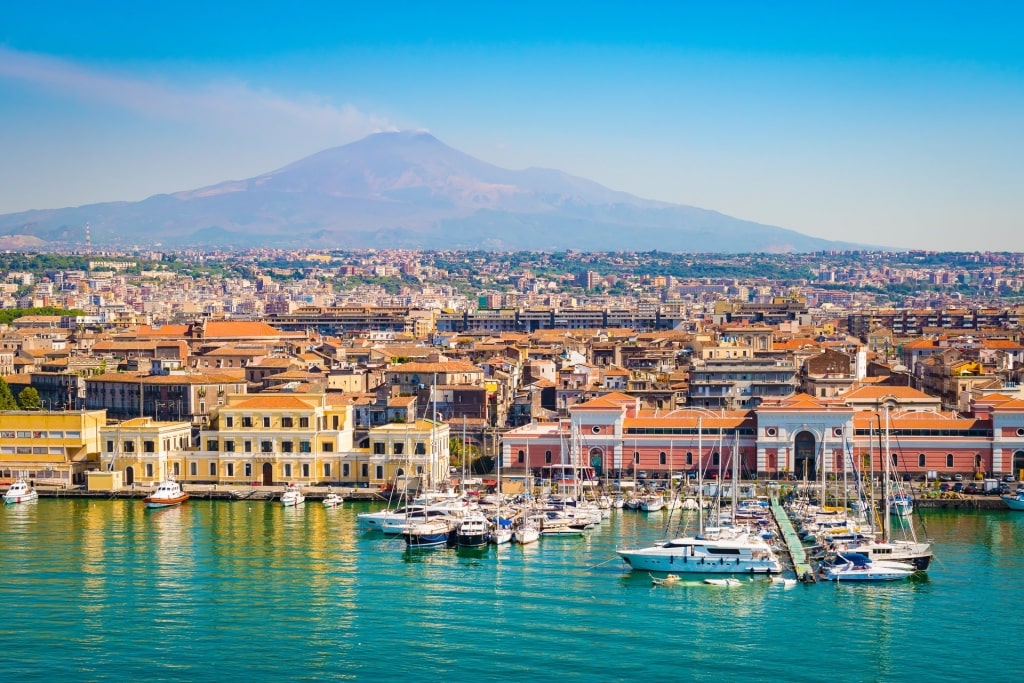
Catania
The second city of Catania is often referred to as the Milan of Sicily. It’s less to do with any alliance with high fashion, and more about its economic importance and handsome baroque appearance—the result of an extensive rebuild after the city was flattened by an earthquake in 1693.
Thankfully the city’s motto is, “Melior de cinere surgo,” or, “From the ruins, I emerge stronger.” And it has, with modern-day Catania now one of the best places to visit in Sicily—a vibrant metropolis of granita stalls, pasta shops, and artisan shops. Its compact center is ideal to explore on foot, with aperitif-friendly piazze presided over by grand opera houses and the clean white tables of the main seafood market laid with glistening grey eels fresh from the day’s catch.
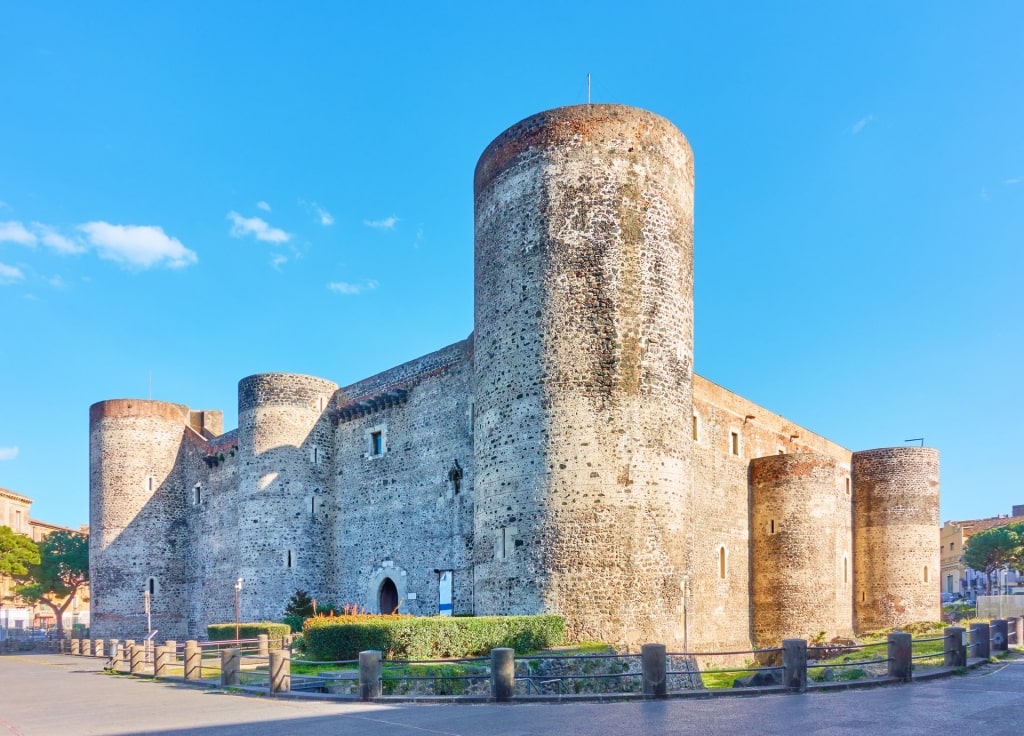
Ursino Castle
Besides wandering its intriguing streets, the city is also home to numerous museums. One of the finest is set within the stout surrounds of 13th-century Castello Ursino. Its wide-ranging and impressive collection includes Roman artifacts, Renaissance art, as well as general historical information about the city’s catastrophes and rebirths.
While the cuisine in Catania makes much of its coastal bounty (as well as the flavorful local eggplant), keep an eye out for treats unique to the city such as crispella, sticky rolls of rice and orange zest that you dip in orange blossom honey before devouring. It’s messy, but a laid-back approach to life is only one of the many ways in which Catania differs from Milan.
Mount Etna
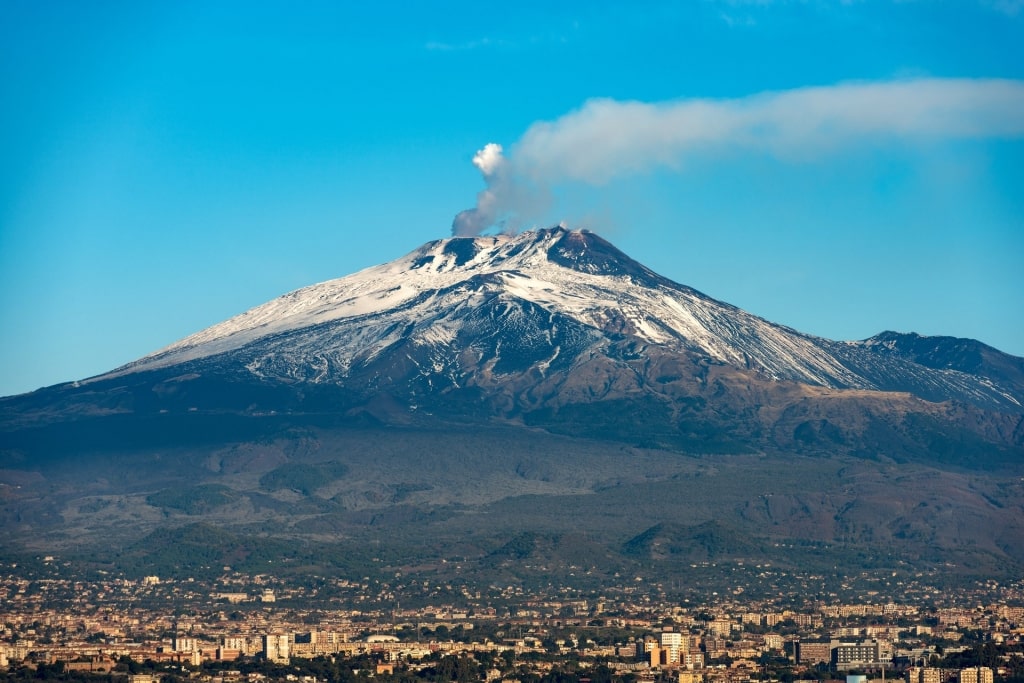
Mount Etna
Mount Etna, Sicily’s totemic live volcano, may rise up on the eastern side of the island, but it presides over the entire interior like a (mostly) benign god. There are extraordinary views of the peak from almost anywhere in Sicily, but perhaps the best outlook is from the terrace of Taormina’s Belmond Hotel Timeo (while sipping an Etna Spritz).
Etna erupts on a fairly regular basis, and despite this, the population lives (mostly) in harmony with this vast, gently sloping landmark. Come winter, when snow blankets the higher elevations, ski runs snake down the mountain in pale imitation of lava flows. During the rest of the year, it’s a destination for Sicilians looking to hike their beautiful hinterland and commune with nature.
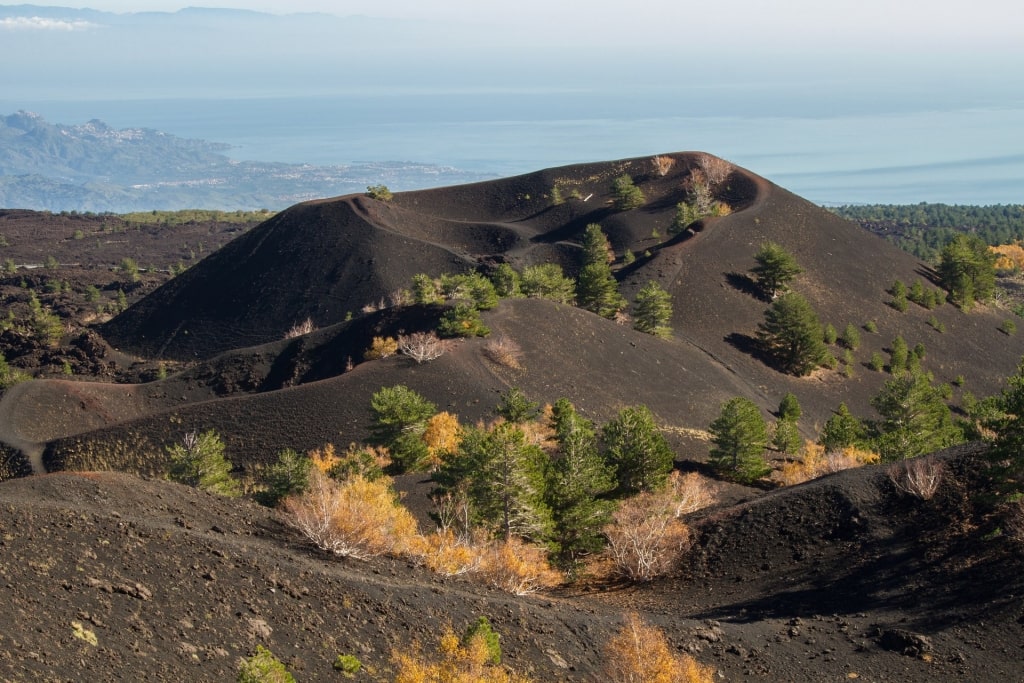
Sartorius craters
An exciting way of getting up close and personal with Etna is by organizing a guided tour. The tour will escort you to its extinct Sartorius craters—a lunar landscape of sooty dunes interspersed with forlorn-looking larches, maroon rocks, and glittering magnesium sand. Head down from its breezy summit and you’ll pass local families BBQing in the oak woods.
A good percentage of those families will be cracking open a bottle of wine, the grapes of which were probably grown on Etna’s generous slopes. Many vineyards here come with tasting rooms, and there’s often a farm component that allows you to marvel at the size and sweetness of the outsized peaches and oranges grown on the volcano.
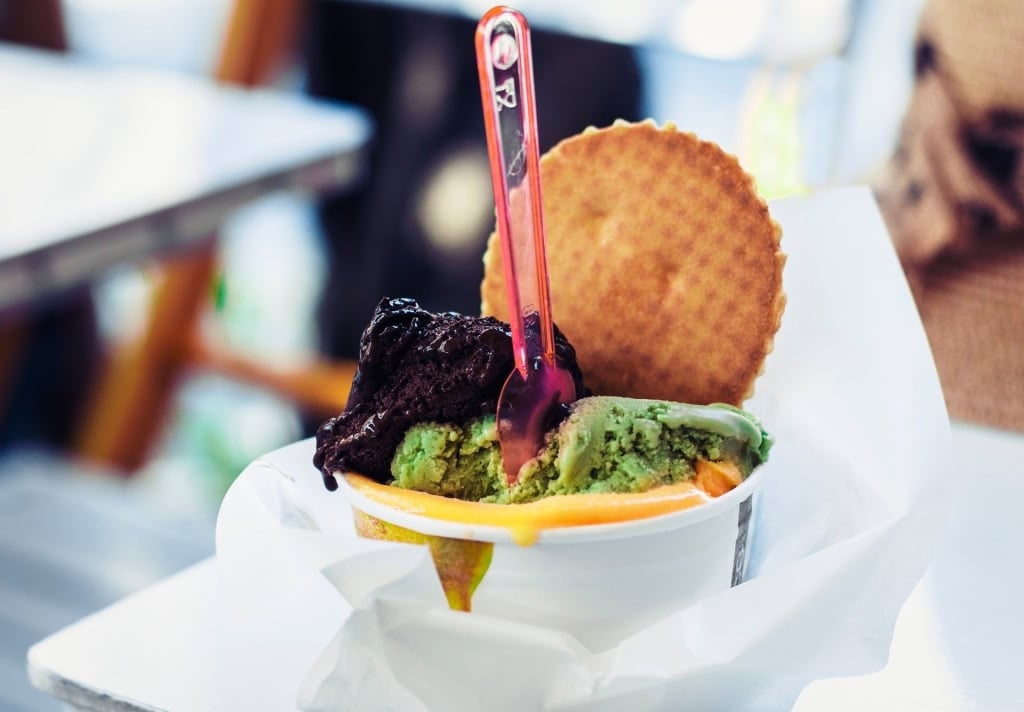
Sicily
Rather keep your distance from one of Europe’s most active volcanoes? Urban streets all over the island are paved with the stone spewed from the mountain. Seek out some Etna-flavored ice cream (strawberry and pistachio) on a basalt-paved side-street and commune with the volcano in your best way.
Discover the best places to visit in Sicily on a luxury cruise to Italy. Browse our cruises to Messina and Catania on our website and book your next unforgettable vacation.
